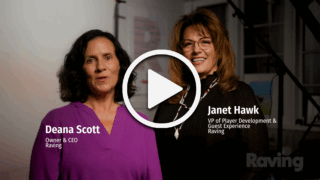
Coming to grips with the digital age
Remember when we used to advertise in phonebooks? If you’re under the age of 30, this may be a bit of a foreign concept, but phonebooks were a necessary piece of our advertising puzzle. We advertised in them because they were an important resource for people (customers) in the local market. If you needed to contact a friend or call a business, you opened up the phonebook and flipped through the pages to search for answers. Looking for a nice restaurant to enjoy on Friday night? Who can deliver pizza tonight? How do I contact Deana Scott? Where does Steve Browne live? What’s Dennis Conrad up to these days? All these answers could be found by searching the phonebook.
Earlier this year, I took a picture of a phonebook that had been thrown onto my driveway. It was wrapped in a clear plastic bag and tossed from a moving vehicle. The art glistened in blue and orange colors behind the sheen of the plastic and driveway dust with an advertisement for a local plumbing and HVAC company. I picked up the book and walked it over to the recycling bin and took another picture, then posted a side-by-side of that phonebook sitting in the driveway next to its final resting place in the recycling bin on my Facebook and Instagram profiles.
Here’s my point … advertising is an ever-changing endeavor. There is absolutely no purpose for spending your budget on phonebook advertising in 2018 – our customers are not using them to find information about our business. They search online, look to social media, and use voice applications on their smartphones to find information. Your money could be more effectively spent on Social Media Marketing (SMM), Search Engine Optimization (SEO), Search Engine Marketing (SEM), and Online Directories. The point of advertising is to be where our customers are, to reach new customers, to find our gamers and leisure travelers. Consumers are bombarded with advertising messages all day every day. As marketing and advertising professionals, it is our job to find our potential and existing players, appeal to them, and effectively influence them to visit us.
Understanding where we can find our customers requires ongoing training, research, and evaluation of our efforts
One frequently occurring discussion point in conversations with industry friends and clients is regarding the appropriate budget to allot for SMM, SEO, SEM, and online directory marketing. There is no simple solution to your approach here. Each property has different needs, budgets, and circumstances for effectively advertising to customers. I can confidently tell you that an ineffective solution would be to continue advertising in phonebooks. Look to digital marketing and social media to find your customers.
SMM is an appropriate channel to redirect some of your advertising budget. According to Pew Research Center, 69% of U.S. adults use at least one social media site. By age, the usage breakdown looks like: 88% ages 18-29; 78% ages 30-49; 64% ages 50-64; 37% ages 65+. The research goes on to show the most widely used platforms and various additional segmentations of those users.
When I started in this business, our advertising budgets looked toward radio, TV, billboards, newspapers, magazines, maps, phonebooks, telemarketing, and brochures. Now our advertising budgets might include all of the above, plus social media, digital signage, search engine optimization, mobile ad networks, streaming media, online banner ads, pay-per-click, mobile apps, and more. We have a plethora of options and need to make some tough decisions for effectively utilizing our advertising budget.
Testing the effectiveness of these new advertising channels requires some flexibility and a willingness to try something different and new
In most cases, we are trying to drop one advertising channel to add another in order to reallocate funds to support a more viable solution. In practice, this looks like eliminating the once popular phonebook ads in favor of SEO, SEM, SMM, etc. It may include cutting back your TV or Radio budgets to add Search Engine Optimization (SEO) and Search Engine Marketing (SEM). It may include dropping one billboard in favor of boosting posts on Facebook. No matter how you cut it up, marketers are asked to use the same budget, with more possible advertising channels.
One benefit of these new digital advertising options is that they provide a very robust data set for evaluating the effectiveness of your efforts. While we used to rely on estimated data provided by our sales rep, phone call tracking, or coupon/offer redemptions at the property, we can now look at data and analytics. SMM, SEO, SEM campaigns provide you click-through rates (CTR), conversions, demographics, reach, impressions, and more. If you advertised with an offer, you could see the ad stats plus redemptions and calculate an estimated ROI for your stakeholders.
What do your budgets look like today for digital marketing? Are you using Yelp Ads, Google AdWords, Facebook/Instagram Ads, Online Banner Ads, Mobile Apps, Mobile Ads Network, and SEO/SEM? How much of your total advertising budget goes toward digital vs. traditional channels?
I want to be quite clear in that I’m not suggesting we completely drop all our former advertising techniques. Billboards, TV, Newsprint, and Radio are still effective ways of reaching our customers. Much like Direct Mail (DM) is still an effective direct marketing technique and works extremely well in conjunction with Email Direct Marketing (EDM) and Mobile Marketing. The question is how much of your budget is being spent on untracked shotgun advertising techniques when compared to the results of targeted advertising and analytics through an SMM program. For some reason, we are still willing to allocate thousands of dollars for traditional marketing channels, but only a fraction of our total budget on digital marketing. Using a similar budget in a social media environment may help you reach exponentially more customers than your traditional advertising efforts.
We need to look at the effectiveness of social media marketing. Provide incentives through online promotions (pending approval from your regulatory agency) to drive visits and test conversions. Run promotions and include offers in your digital marketing channels. Consider increasing your online/mobile marketing budgets and dropping your phonebook ads.







